
| Publisher: | Flatiron Books | |
| Genre: | Psychological, Women, Suspense, Thrillers, Fiction | |
| ISBN: | 9781250883643 | |
| Pub Date: | August 2025 | |
| Price: | $28.99 |
| Starred | Fiction |
by Alexis Soloski
Thrilling and seductive, Flashout is a suspenseful, beguiling read. In her sophomore novel, Alexis Soloski, a culture reporter for the New York Times and author of Here in the Dark, taps into the dark side of making art and living without boundaries. It's 1972 and Allison, 19 years old and finishing her second year at a prestigious college near New York City, chafes against the rules--of the school, her parents, and society at large--and is ravenous for experience outside the lines. She finds it with Theater Negative, a troupe of outré performance artists crashing together in a filthy apartment in the city whose heyday (marked by arrests for obscenity) already seems past. Allison is drawn in by Peter, the group's cultlike leader, who sleeps with her and a host of other young women who fall under his spell. Despite the creep of addiction, violence, and sexual abuse, Allison is seduced by the idea of making art with absolute freedom and joins the group on a European tour that quickly turns deadly.
The novel alternates the 1972 narrative with one set 25 years later in Los Angeles, Calif., where Allison teaches theater at an exclusive high school. Allison's time with Theater Negative has made her cynical, secretive, and troubled. Worse, her attempt to escape her past and a reckoning for her actions comes to a crashing halt when an anonymous member of the group contacts her, threatening to reveal all. Soloski's prose is lush, hypnotic, and full of shards. --Debra Ginsberg, author and freelance editor

| Publisher: | Pegasus Books | |
| Genre: | Biographical & Autofiction, Historical - Regency, General, Romance, Fiction, Historical | |
| ISBN: | 9781639369256 | |
| Pub Date: | August 2025 | |
| Price: | $28.95 |
| Fiction |
by Paula Byrne
British biographer Paula Byrne (The Real Jane Austen) turns to historical fiction in the winsome Six Weeks by the Sea. Based on Jane Austen's family's sojourn in Sidmouth, Devon, in 1801, Byrne's narrative imagines Jane's interactions with her family members and several eligible gentlemen, including one who makes quite an impression.
When Jane arrives in Sidmouth, she is heartbroken over leaving her home in Steventon and dreading her upcoming move to Bath. Gradually, the seaside town's charms revive her, especially when her brother Frank and best friend Martha Lloyd come to visit. Though Jane hopes Frank will marry Martha, she does not think of her own romantic prospects until she meets Frank's friend, Captain Parker. Jane finds him engaging, but she is also nettled and intrigued by Samuel Rose, a lawyer who joins their circle. As she works on her latest novel and enjoys Sidmouth's social life, Jane is forced to revise her first impressions of both men.
Byrne writes in a style reminiscent of Austen's own, contrasting her characters' inner desires with the superficial politeness they must display. Austen fans will enjoy nods to well-known incidents and characters from her novels: a talkative clergyman, a matchmaking mother, a picnic in the sunshine. Byrne also explores the issues of abolition and racism in Regency England, and gives glimpses into the lives of several contemporary poets. Six Weeks by the Sea is a poignant reimagining of a pivotal summer in Austen's life. --Katie Noah Gibson, blogger at Cakes, Tea and Dreams
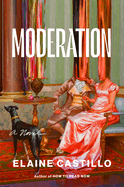
| Publisher: | Viking | |
| Genre: | Women, Literary, Fiction, Asian American & Pacific Islander | |
| ISBN: | 9780593489666 | |
| Pub Date: | August 2025 | |
| Price: | $29 |
| Fiction |
by Elaine Castillo
In Elaine Castillo's second novel, Moderation, a moderator for a social media site thrives in the psychologically challenging role precisely because she has closed herself off to emotion and romance--until she meets her new boss on a virtual reality project.
Thirtysomething Filipinx American "Girlie Delmundo" (the pseudonym she chose) is a top-performing moderator at Reeden's Las Vegas office, reviewing and removing distressing violent and sexually explicit content all day long. That Girlie is the sole "Subject Matter Specialist" on child sexual abuse indicates how tough she is--but also that she has personal experience of victimization. As the family's eldest daughter, she feels financially responsible for her mother, a nurse, and the five other relatives who live with them. When she's offered a promotion to Playground, a VR theme park project acquired by Reeden, she can't pass up the astronomical pay rise.
Playground specializes in re-creating historical spectacles, like the Roman gladiators and the St. Louis World's Fair. The real-time VR moderator job involves suppressing violence, racism, and sexual harassment. The challenge is nothing Girlie can't handle. But what does bother her is her growing attraction to Playground boss William Cheung, who's from Hong Kong via London. Castillo (America Is Not the Heart) unfolds this relationship slowly and convincingly.
Castillo renders all the VR spaces effectively, but it's even more delightful to be in her real world of mostly queer people of color--Girlie's cousin's birthday party is a hoot. A winning combination of cutting-edge technology and old-fashioned romance, this is perfect for fans of The Ministry of Time and Tomorrow, and Tomorrow, and Tomorrow. --Rebecca Foster, freelance reviewer, proofreader, and blogger at Bookish Beck
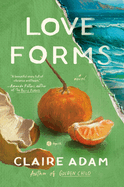
| Publisher: | Hogarth | |
| Genre: | Psychological, Family Life, General, Literary, Fiction | |
| ISBN: | 9780593230923 | |
| Pub Date: | July 2025 | |
| Price: | $28 |
| Fiction |
by Claire Adam
In Claire Adam's tender second novel (after Golden Child), a middle-aged woman reflects on the trauma of being forced to surrender her baby for adoption.
Dawn, a 58-year-old divorcée from Trinidad, leads a quiet life in London. She works in real estate and keeps in touch with her adult sons as well as with her mother and brothers back home. One day, she receives an e-mail from a woman who was adopted in Venezuela in 1982 and is wondering if Dawn could be her biological mother.
"For the last forty-odd years, the story has existed only in... disconnected pieces," Dawn acknowledges; now it's time to bring it all together. When she was 16, a brief sexual encounter with a Scottish tourist during Carnival led to pregnancy. Dawn was bundled off to Venezuela--at night, wearing black, crouching in the backseat like a fugitive--to spend her final trimester in a home run by nuns, where she would leave the baby behind. Her parents refused to mention the incident afterward. But as a family reunion in Tobago approaches in the present, Dawn summons courage to face the past.
Dawn has a voice that is strongly reminiscent of Elizabeth Strout's Lucy Barton: hesitant, cogitating. It's not the first time she's faced the emotional roller coaster of a potential match. What's most important to Dawn in this slow-burning novel is not identifying her daughter but coming to terms with the psychological damage caused by her family's pact of silence. Love Forms is recommended for fans of Anne Enright and Ingrid Persaud. --Rebecca Foster, freelance reviewer, proofreader and blogger at Bookish Beck

| Publisher: | Ecco | |
| Genre: | Short Stories (single author), Nature & the Environment, Family Life, General, Literary, Fiction, Asian American & Pacific Islander, LGBTQ+ | |
| ISBN: | 9780063419971 | |
| Pub Date: | August 2025 | |
| Price: | $18.99 |
| Fiction |
by Mariah Rigg
Mariah Rigg, a Samoan Haole born and raised in O'ahu, presents Extinction Capital of the World, a masterful debut collection inspired by her own Hawai'ian history. In 10 interconnected stories, Rigg features multigenerational members--and their adjacents--of an extended family with overlapping Native and settler backgrounds.
Rigg begins with "Target Island," distilling a man's life forever affected by the U.S. government's 1948 bombing of Kaho'olawe. Rigg traverses through six decades when sexagenarian Harrison is back on Kaho'olawe, volunteering to make the island bomb-free, dreaming of a haven for the great-grandchildren he will never meet. His granddaughter, Lila, reappears in "Field Dressing," featuring Lila's father, Harrison's son, as he recalls Harrison's death while sharing a fishing trip with his hard-drinking friend Max.
In the titular final story, Kira arrives home, seeking solace. Reconnecting with her extended family, particularly her father, Pono, offers Kira possible peace. "Scientists call Hawai'i the extinction capital of the world," Pono explains. "We had the most biodiversity... and each year, we lose the most of it." Kira's marine biology research enables a new generation of hope, her work instrumental in potentially saving the world's reefs.
Each of Rigg's stories easily stands alone as a succinct narrative but to parse together the web of tangled relationships yields gratifying rewards. To do so requires deliberate commitment--Rigg often eschews names and direct associations, relying on seemingly casual details as clever bridges between characters and stories. Throughout her meticulous fiction, she skillfully intertwines Hawai'i's complicated history of military abuse, missionary usurpation, colonial legacy, invasive tourism, ecological destruction. That intricate collage of people and events creates a wondrous literary gift. --Terry Hong

| Publisher: | Abrams Press | |
| Genre: | Psychological, Dark Humor, Women, Horror, Magical Realism, Family Life, Humorous, General, Marriage & Divorce, Thrillers, Fiction | |
| ISBN: | 9781419778988 | |
| Pub Date: | August 2025 | |
| Price: | $28 |
| Fiction |
by Jessica Gross
Jessica Gross (Hysteria) staggers and challenges readers with her sophomore novel, Open Wide, starring a socially awkward protagonist who finds love and dives in very, very deeply.
Olive compulsively records all the hours of her life, "collecting sounds the way other people collect stamps." She records diegetic sounds, which she uses in her work as a radio producer, and conversations, which she plays back--to study what went right or wrong, to soothe or arouse herself. She has long yearned for romance when she meets Theo, a handsome colorectal surgeon. He agrees with Olive's proffered metaphor: people's insides look like pink pasta. Olive can't get enough. She wants to spend every night together. She wants to "climb inside" him.
Alongside their deepening love affair, Olive reveals to readers her relationships with her sisters and mother, through which Gross also explores boundaries (or lack thereof) and obsessive love. "My mother had climbed inside of me. My little self, filled with her bigger one. Her daughter, who was not supposed to be the vessel, but the one contained." However, Theo is not parent or child to Olive but partner, so their intimacy is different, Olive tells herself.
Olive's first-person narration of her bizarre story is an inspired choice that makes readers privy to her fears, confusions, passions, and rationalizations. By the final pages, which reveal what has changed in Olive's surreal world, readers will feel dizzy with her perspective and its consequences. Open Wide is a tense, engrossing examination of the bounds of love. --Julia Kastner, blogger at pagesofjulia
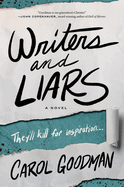
| Publisher: | Morrow | |
| Genre: | Psychological, Greece, World Literature, Mystery & Detective, Amateur Sleuth, Suspense, Thrillers, Fiction | |
| ISBN: | 9780063398733 | |
| Pub Date: | July 2025 | |
| Price: | $18.99 |
| Mystery & Thriller |
by Carol Goodman
The standard setup of a group invited to a remote area where they become stranded and murdered one by one receives a refresher with a large dose of Greek mythology in Writers and Liars. While it helps to know a smidgeon, Carol Goodman's energetic storytelling makes even obscure myths accessible to the novice.
Maia Gold was once on track to become a brilliant novelist. Fifteen years ago, she received a boost when she finished her novel at an exclusive writers' retreat on the Greek island of Eris, owned by billionaire Argos Alexander. Her novel was a success, but betrayals she experienced there caused her to sour on being a full-time writer. Now Maia runs a low-budget museum, and she claims she's been working on a manuscript for years. She wants to ignore the fancy invitation from Argos summoning her and "a select group of artists" back to Eris, but she returns despite her misgivings. There, she reunites with just about all the first retreat attendees, bringing more chaos. Among them are the unbearable Olivia Knox, with her 25 Detective Moreau novels, and Bill Collins, who used to write cozy mysteries and is now the Eris chef. Argos isn't around but has left a challenge: whoever writes the most suspenseful mystery in the next few days will receive a fortune and guaranteed success. The next day, Argos is the first dead body found, communication is cut off, and the writers discover that Eris holds many secrets.
Writers and Liars unfolds at a leisurely pace, but Goodman's attention to detail keep the plot churning, aided by the often insufferable but also entertaining personalities. --Oline H. Cogdill, freelance reviewer
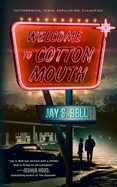
| Publisher: | Blackstone Publishing | |
| Genre: | Suspense, Thrillers, Fiction | |
| ISBN: | 9798874881931 | |
| Pub Date: | July 2025 | |
| Price: | $18.99 |
| Mystery & Thriller |
by Jay S. Bell
In Jay S. Bell's Welcome to Cottonmouth, the titular town is hardly welcoming, despite being called "a slice of heaven in the piney woods of East Texas." This so-called "nice, quiet place" with its "unique residents" appears to be a derelict hamlet with a garage, a decent restaurant, and a run-down motel, among other--many vacant--storefronts. But its façade camouflages its true purpose--providing a haven for retired spies, ex-military personnel, and defectors sent there by the U.S. government.
The environment Bell creates makes a formidable backdrop for his action-packed narrative, which moves at lightning speed while delving into the myriad personalities who thrive in this secluded area. As the caretaker responsible for keeping the denizens safe and secret, Devlin Mahoney also manages the Cottonmouth Motor Court. Devlin keeps the status quo until Britte Thorpe and teenager Siobhan stumble into Cottonmouth seeking refuge after their car breaks down. Both are clearly scared, having escaped from a criminal kingpin. Devlin has barely set them up in a motel room when two thugs arrive and try to force the pair into their car. Devlin's nonthreatening looks disguise his lethal skills. More criminals descend on this "Island of Misfit Spies," where Cottonmouth's residents are itching to reactivate their dormant skills.
Devlin knows that helping the women is the right decision, but the escalating bloodshed also risks exposing Cottonmouth's residents. A high body count and frequent violence almost mar the clever setup of a town devoted to former spies, but Bell's energetic storytelling keeps Welcome to Cottonmouth on track. --Oline H. Cogdill, freelance reviewer

| Publisher: | Avon | |
| Genre: | Women, Romantic Comedy, Espionage, Mystery & Detective, Amateur Sleuth, Romance, Suspense, Thrillers, Fiction, Action & Adventure | |
| ISBN: | 9780063386976 | |
| Pub Date: | August 2025 | |
| Price: | $24.99 |
| Romance |
by Ally Carter
Ally Carter (The Most Wonderful Crime of the Year) returns to the world of international espionage--and identical twins--in her lively, well-plotted second rom-com for adults, The Blonde Who Came in from the Cold. Carter continues the story of the sisters introduced in The Blonde Identity, this time focusing on Alex Sterling and her decade-long love-hate relationship with fellow spy Michael "King" Kingsley. When the two wake up handcuffed together in the dark, six years after Kingsley left the CIA and a year after Alex disappeared altogether, they must use their combined skills to ace their greatest mission yet.
Carter's twisty narrative flips back and forth between the present-day mission and the stages of Alex and King's relationship, from Alex's days as a Langley rookie to the times they posed as a couple. Merritt, their elegant, sarcastic spymaster and King's Judi Dench-esque surrogate grandmother, has her own reasons for repeatedly pairing them, but even their crackling mutual attraction doesn't neutralize the dangers of the job. Carter peels back the layers of Alex's bravado to reveal her secrets, the biggest one being her own insecurity. She also explores the weight of King's three-generation family legacy in the CIA. As they crisscross Europe in search of an ex-Soviet kingpin and some highly incriminating evidence, these two spies are forced to finally confront their greatest vulnerability: their feelings for each other.
With rapier-sharp wit and disarming tenderness, plus plenty of high-speed chases and a few explosions, Carter delivers a snarky-but-sweet romance cloaked in a thoroughly entertaining spy thriller. --Katie Noah Gibson, blogger at Cakes, Tea and Dreams
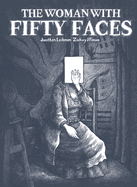
| Publisher: | Fantagraphics | |
| Genre: | True Crime, Biography & Memoir, Contemporary Women, Con Artists, Hoaxes & Deceptions, Nonfiction, Crime & Mystery, Comics & Graphic Novels | |
| ISBN: | 9798875001116 | |
| Pub Date: | July 2025 | |
| Price: | $29.99 |
| Starred | Graphic Books |
by Jonathan Lackman, illust. by Zachary J. Pinson
Art historian Jonathan Lackman and painter/musician Zachary J. Pinson gloriously, graphically resurrect an enigmatic artists' muse in The Woman with Fifty Faces: Maria Lani & The Greatest Art Heist That Never Was. Within the first five pages, Lackman provides a concise overview of Lani's life: The German silent film star arrived in Paris in 1928, convinced 50 significant artists--Henri Matisse, Man Ray, Marc Chagall, among them--to immortalize her image, engendering "an exhibition unparalleled in the history of art" that traveled to New York, Chicago, London, and Berlin. Then Lani vanished, prompting even her greatest champion, Jean Cocteau, to dismiss her as a "con artist from Warsaw." That narrative held firm "but it was also wrong. The truth is... even better": an emboldening determination to "try to outlive the bastard [Hitler]" in the wake of terrifying widespread destruction.
Lackman first learned about Lani in 2004: Her remarkable associations, sudden disappearance, the extraordinary exhibition with "more portraits than anyone," prompted him to ask, "Why has her story never been told?" Lackman's two decades of research and Pinson's 5,000 illustrating hours magnificently explore "the biggest mystery in Paris," tracing Lani's Polish birth, the antisemitic violence her family repeatedly escaped, her marriage to (wannabe) filmmaker Max Abramowicz, their peripatetic reinventions and "sleight of hand" machinations. Pinson's visualizations are an utter marvel--black-and-white pen-and-ink drawings, made dense with meticulous hatching. The effect is not unlike scratch art, as if every panel is a chance to uncover and decipher secrets. Together, the complementary duo creates an overdue homage to a brilliantly inventive woman of influence and vision. --Terry Hong
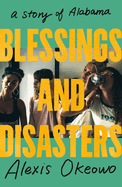
| Publisher: | Holt | |
| Genre: | Biography & Autobiography, United States, Social Classes & Economic Disparity, State & Local - South (AL,AR,FL,GA,KY,LA,MS,NC,SC,TN,VA,WV), History, African American & Black, Social Science | |
| ISBN: | 9781250206220 | |
| Pub Date: | August 2025 | |
| Price: | $28.99 |
| Starred | Biography & Memoir |
by Alexis Okeowo
Journalist Alexis Okeowo's insightful second book, Blessings and Disasters, examines the complicated history of Alabama through a mixture of history, reporting, and personal reflections on her experience growing up in Montgomery. As she delves into Alabama's contrasts and contradictions, Okeowo (A Moonless, Starless Sky) shares her love for--and sharp criticism of--her home state.
A graduate of Princeton University who later became a foreign correspondent, Okeowo is "familiar with how places can be stereotyped and neglected." She chronicles the forced removal of Native American peoples from Alabama, interviewing several members of the Poarch Band of Creek Indians. Okeowo also chronicles her parents' separate journeys from Nigeria to Alabama. She interviews Alabamians of multiple races, genders, and generations about their experiences, piecing together a mosaic of different ideas about what it means to be from Alabama. Along the way, she examines the influence of evangelical Christianity on state politics; the intertwined effects of race and class on education and other outcomes for children; and the narratives the state has created to justify its policies.
"In Alabama, we exist at the border of blessing and disaster," Okeowo writes, musing on how the realities of her home state--its weather, culture, and religion--reflect (and swing between) those two extremes. With a keen eye for detail and a thoughtful big-picture perspective, Okeowo paints a layered portrait of a state whose green fields contain more heartbreak and more hope than most people realize. Alabama is more than cotton, Confederate flags, and civil rights, and Okeowo's book is a nuanced look at a place she wrestles with and will always love. --Katie Noah Gibson, blogger at Cakes, Tea and Dreams
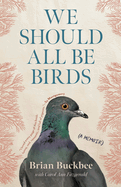
| Publisher: | Tin House Books | |
| Genre: | Nature, Biography & Autobiography, Medical (Incl. Patients), Animals, Diseases & Conditions, Health & Fitness, Birds, Chronic Fatigue Syndrome | |
| ISBN: | 9781963108293 | |
| Pub Date: | August 2025 | |
| Price: | $28.99 |
| Biography & Memoir |
by Brian Buckbee, Carol Ann Fitzgerald
Brian Buckbee, in collaboration with Carol Ann Fitzgerald, has written a memoir of extraordinary grace and beauty about hope and resilience in the face of debilitating illness with We Should All Be Birds.
An avid traveler, Buckbee found his world caving in on itself after he was stricken with a mysterious illness during a trip to Southeast Asia. Reeling from a breakup with his fiancée, L., a woman he still loved, Buckbee became increasingly isolated, tortured by relentless migraines, and frustrated by a lack of treatment for or diagnosis of his symptoms.
After a chance encounter with an injured pigeon he named Two-Step, Buckbee rehabilitated the bird, and soon his home turned into a feathered chaos of wounded and recovering birds. Although Two-Step thrived, found a mate, and began his return to the wild, Buckbee's condition deteriorated physically and emotionally. Nonetheless, by rescuing Two-Step, Buckbee began to save himself.
Buckbee's prose (brilliantly edited by Fitzgerald, to whom he dictated the memoir) is vibrant, lyrical, and pulsing with life and the wonder of nature. His ruminations drift from descriptions of majestic Asian fruit bats to soft-focus memories of L. and her son, the loss of one of his avian wards to a hawk, the cruelty of his pain, and the sweetness of his makeshift bird sanctuary. The sense of loss and loneliness is intense but so, too, is the sense of compassion Buckbee shows for his rescued birds and the companionship he receives from them. We Should All Be Birds is both elegy and paean, a celebration of life and the discovery of hope within pain. --Debra Ginsberg, author and freelance editor

| Publisher: | Gallery Books | |
| Genre: | Biography & Autobiography, Family & Relationships, Abuse, Sexual Abuse & Harassment, Memoirs, Social Science, Child Abuse | |
| ISBN: | 9781668036228 | |
| Pub Date: | August 2025 | |
| Price: | $29.99 |
| Biography & Memoir |
by Kate Price
Child sex-trafficking expert and human rights advocate Kate Price reveals her own childhood history of sexual abuse and violence in her harrowing but ultimately hopeful memoir, This Happened to Me: A Reckoning. Price and her older sister grew up in a tiny Pennsylvania town in northern Appalachia, where a generational pattern of addiction and violence manifested in constant physical and emotional cruelty delivered by her father. He also drugged her and sexually abused her until she reached puberty, at which time he left Price's mother and moved out. Price coped by throwing herself into her studies and books. These, along with the safe spaces of libraries and bookstores, she credits with saving her life.
Her determination to escape her past led Price to Massachusetts to pursue an academic career, but the trauma she'd endured and buried haunted her, resulting in depression and severe anxiety. Through therapy with Dr. Bessel van der Kolk, author of The Body Keeps the Score, in which Price was featured, Price discovered that her father had, in unspeakably horrendous acts, not only sexually abused her but also trafficked her to other men. Over the many years that followed this revelation, Price began a long, nonlinear journey of self-realization and healing, finally breaking the cycle of trauma through sheer force of will. Price's story, told with passion and joy for the life she built for herself, is deeply moving. That she survived, thrived, and become an advocate for other sex-trafficking victims is nothing short of breathtaking. --Debra Ginsberg, author and freelance editor

| Publisher: | Simon & Schuster | |
| Genre: | Industries, Social History, Business & Economics, Popular Culture, Media & Communications, History, Language Arts & Disciplines, Social Science, Publishers & Publishing Industry | |
| ISBN: | 9781668003916 | |
| Pub Date: | July 2025 | |
| Price: | $29.99 |
| Starred | History |
by Michael M. Grynbaum
In Empire of the Elite: Inside Condé Nast, the Media Dynasty That Reshaped America, longtime New York Times media correspondent Michael M. Grynbaum crafts a detailed account of personal ambition, corporate machinations, family histories, and shifting cultural landscapes, creating a compelling narrative about the history of the Condé Nast media empire and, more broadly, American society.
Grynbaum invites readers into the gilded lifestyles and vibrant boardrooms of Condé Nast, depicting the fluctuating business dealings and sometimes over-the-top personalities involved. He leaves no expense account unexamined as he explores the company's evolution from its foundational years under founder Condé Montrose Nast to its vast expansion of scope and influence during the leadership of Samuel Irving "Si" Newhouse Jr., as well as the challenges it faced in acclimating to the digital age.
Even readers unfamiliar with notables such as Tina Brown, Graydon Carter, or Anna Wintour will be captivated by the rise of iconic magazine titles including Vogue, Vanity Fair, and the New Yorker, and the brilliant, glamorous individuals who helmed them.
Empire of the Elite is filled with captivating anecdotes and behind-the-scenes glimpses into the lives of celebrities who graced the covers of Condé Nast publications and the editors who became celebrities themselves, but it's not overly sensationalistic. Grynbaum deepens readers' understanding of the company, rather than simplistically skewering its inhabitants, though he also ensures that inflated egos do not go unpunctured. The level of detail presented is a testament to his meticulous research, and he executes with adroit journalistic skill a comprehensive analysis of how Condé Nast became a cultural force. --Elizabeth DeNoma, executive editor, DeNoma Literary Services, Seattle, WA

| Publisher: | Page Two Books | |
| Genre: | Self-Help, Personal Growth, Leadership, Business & Economics, Motivational & Inspirational, Success, Workplace Culture | |
| ISBN: | 9781774585597 | |
| Pub Date: | July 2025 | |
| Price: | $22.95 |
| Business & Economics |
by Bree Groff
Bree Groff's Today Was Fun: A Book About Work (Seriously) is an impassioned, authentic call to reimagine work as a source of joy, not drudgery. "Most work, most days, should be fun," Groff advocates, drawing from observations of her parents' joyful careers and her own professional expertise as a senior advisor at the transformation consultancy SYPartners, which endeavors to create a humanity-driven world of work.
Groff organizes her book around seven witty and insightful rules such as, "Your brain works whether you're wearing a suit or stretchy pants." She dismantles pervasive and imperfect notions of labor and encourages readers to craft fulfilling workdays and vibrant personal lives.
Today Was Fun blends anecdotes, research, and practical tools, including team rituals such as a daily check-in and the fast food rule, which emphasizes making sure your team members feel heard. Groff offers leaders actionable solutions for creating inclusive, gratifying, high-performing "cozy teams" and recommends that, "in a cooperative system, the best strategy is to start with generosity."
While Groff acknowledges that "not all days will be fun," she enthusiastically champions the stance that "Life is joy, not endurance." She shares her experience of caring for her terminally ill mother to reinforce her advice to "bank the joy now."
Groff's conversational style and inclusion of interactive exercises make Today Was Fun an engaging read for those seeking to reclaim joy in their occupations and their lives. --Grace Rajendran, freelance reviewer

| Publisher: | Morrow | |
| Genre: | Women, Friendship, Small Town & Rural, Satire, Southern, Fiction | |
| ISBN: | 9780063348707 | |
| Pub Date: | August 2025 | |
| Price: | $18.99 |
| Now in Paperback |
by Kirsten Miller
The whimsical premise of Kirsten Miller's Lula Dean's Little Library of Banned Books eases readers into the story, but the narrative quickly becomes serious as tensions build and tempers boil.
Lula Dean knows she deserves to be respected, and she blames several people for the distinct lack of respect the town of Troy, Ga., shows her. Lula gets her chance when she discovers an erotic cake cookbook in the town library and forms the Concerned Parents Committee to remove all objectionable books from Troy's public and school libraries. Lindsay Underwood comes back from college just long enough to replace all the "wholesome books" Lula stocked in the new little library in her yard with banned books, all disguised by the dust covers of Lula's original choices. Unsuspecting town members find the books they need: a boy struggling to accept his gay brother finds a heartwarming gay romance; a faithful wife who discovers her husband is cheating finds an empowering book on witchcraft; a young boy worried about his mother's bleeding finds a book about girls getting periods; and a Black man finds evidence that "there are plenty of good folks around here. They just haven't been shouting as loud as the others." But the shouting voices bring other, more dangerous, voices into the fray, including closet Nazis, forcing everyone to reevaluate what they thought they knew about their town and its residents.
Miller (The Change; How to Lead a Life of Crime) conveys a wide range of perspectives with skill as she provides glimpses into thought patterns of a variety of characters in this insightful exploration of early 21st-century culture wars and book challenges. --Dainy Bernstein, freelance reviewer
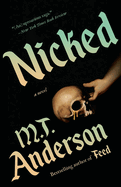
| Publisher: | Vintage | |
| Genre: | Medieval, Fantasy, Fiction, Historical, Gay, LGBTQ+ | |
| ISBN: | 9780593688007 | |
| Pub Date: | July 2025 | |
| Price: | $17 |
| Now in Paperback |
by M.T. Anderson
The cleverness of this page-turner begins with its title, Nicked. It triples as the book's central action, the object of the theft, and the humble monk whose dream sets the chain of events in motion.
National Book Award-winning author M.T. Anderson (Feed; The Assassination of Brangwain Spurge), making his adult debut, sets the stage with eerily modern elements for this 11th-century tale set in Italy and based on true events. Invaders and a pox are rapidly spreading throughout the land, making some people gravely ill, and the rest fearful of going out. This is certainly the case in Bari, where Nicephorus serves in the Benedictine monastery.
As the novel opens, the Archbishop of Bari has instructed Nicephorus and his brothers to pray to St. Nicholas for healing and guidance. Nicephorus has a dream, and the abbot conveniently interprets the dream as the saint's wish to have his remains moved from Myra to Bari. Nicephorus thinks the abbot's made quite a leap of logic. He goes about his day and meets a Tartar named Tyun, the "saint hunter." Tyun's boasting contrasts comically with Nicephorus's compulsion for truth-telling. Soon the two form an unlikely alliance as part of the Norman-led team that attempts to reach Myra and pilfer the saint's bones.
Anderson humorously exploits the blind spots of power-hungry leaders, as well as the polar-opposite qualities of Tyun and Nicephorus amidst Nicephorus's growing attraction to Tyun. But alongside the humor and tension, Anderson plumbs questions of what constitutes as faith, and the circularity of human history. The tale ends with a delectable twist and a tantalizing possibility of further relic hunts. --Jennifer M. Brown, reviewer
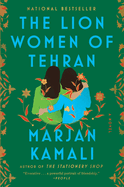
| Publisher: | Gallery | |
| Genre: | Friendship, 20th Century - Post-World War II, Own Voices, Fiction, Historical | |
| ISBN: | 9781668036594 | |
| Pub Date: | August 2025 | |
| Price: | $18.99 |
| Now in Paperback |
by Marjan Kamali
Marjan Kamali's gorgeous, gripping third novel, The Lion Women of Tehran, paints a layered portrait of female friendship, unexpected cultural shifts, and second chances. In 1950s Tehran, seven-year-old Ellie is devastated and blindsided by her father's death, which forces Ellie and her mother to move to a smaller house across town. On the first day at her new school, Ellie meets Homa, a confident, bubbly local girl, and they become fast friends, spending hours together and dreaming of their futures, when they will become "lion women": bold, courageous, and successful.
Kamali (The Stationery Shop, Together Tea) sensitively portrays the complex bond between Ellie and Homa as they grow into young adults, two young women of differing social classes, temperaments, and ambitions. Kamali provides a nuanced look at the experiences of young women under the Shah's regime through their social circle. As the political landscape in Iran shifts rapidly, Ellie worries for Homa and her radical ideas, but neither of them can imagine how the country's political climate will shape the rest of their lives.
Narrated mostly by Ellie, The Lion Women of Tehran takes readers from the streets of Tehran to 1970s Manhattan, where Ellie and her husband eventually make their home. Homa narrates several brief sections where what's left unsaid is as powerful as what's spelled out. Kamali is unwilling to give her characters the easy way out, but their stories, despite the pain, always bend toward hope.
Insightful, compassionate, and grounded in historical detail, The Lion Women of Tehran is an evocation of a country upended and a tribute to the ways deep friendships shape our lives. --Katie Noah Gibson, blogger at Cakes, Tea and Dreams

| Publisher: | Ace | |
| Genre: | Fantasy, Romance, Fiction | |
| ISBN: | 9780593817049 | |
| Pub Date: | July 2025 | |
| Price: | $19 |
| Now in Paperback |
by Ruby Dixon
The hunt for magical artifacts turns especially horny in Bull Moon Rising, a noblewoman-meets-minotaur romantasy by Ruby Dixon (Bound to the Shadow Prince). Bookish Aspeth is desperate to replace the magical artifacts her father has gambled away over the years, so she can recover her family's standing and secure their holding. Though she has spent her life studying and successfully avoiding marriage, she travels to Vastwarren City with her lady's maid, Gwenna, to join the Royal Artifactual Guild and earn the right to hunt for artifacts.
Hawk has worked for the renowned--and perpetually drunk--Magpie since he joined the Guild, and now he trains Magpie's fledglings, the income from which supports them both. Unfortunately, this year's group is shaping up to be the worst yet. Hawk knows that during the impending Conquest Moon, he--like all other Taurians--will go into a mating frenzy, and he needs someone to help him through it. So, because Aspeth needs a chaperone to be eligible for this male-dominated trade, and the others are completely unfit, she proposes a solution to Hawk: a marriage of convenience.
Bull Moon Rising is a fascinating mix of adventure, patriarchal anthropocentric bureaucracy, and spicy monster romance. Dixon expertly balances clever world-building with steady character and relationship growth, while humor and sexual tension keep the pages turning. Tough days of training and fending off the advances of a fortune hunter are offset by cozy evenings with the found-family vibes of novels such as Travis Baldree's Legends & Lattes, and positively steamy nights. Fans of paranormal romance novels including Lana Ferguson's The Fake Mate and Ali Hazelwood's Bride will devour this. --Suzanne Krohn, librarian
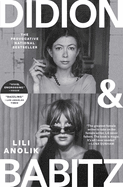
| Publisher: | Scribner | |
| Genre: | Biography & Autobiography, Art, American, Literary Criticism, Popular Culture, General, Entertainment & Performing Arts | |
| ISBN: | 9781668065495 | |
| Pub Date: | July 2025 | |
| Price: | $20 |
| Now in Paperback |
by Lili Anolik
One writer's career flourished while the other's didn't, but the lives of Joan Didion and Eve Babitz are, in many ways, inextricably linked, as Lily Anolik shows in Didion & Babitz, her chatty, entertaining follow-up to Hollywood's Eve. Anolik is up-front about her preference. "I've picked my side: Eve's. A no-brainer since I'm crazy for Eve." She calls Babitz "the secret genius of L.A.," whereas, regarding Joan, she writes, "I respect her work rather than like it." Anolik thought she was done with her "unbalanced, fetishistic" obsession until, after Babitz's death in 2021, she discovered a letter Babitz wrote to Didion, which contained surprisingly harsh sentiments toward someone who helped get her work into Rolling Stone and was unofficial editor of Babitz's memoir, Eve's Hollywood. Further discoveries convinced Anolik to revisit Babitz's story and examine more closely Didion's achievements.
The result is this diverting read. Through letters and dozens of interviews, Anolik creates an atmospheric portrait of late 20th-century California. She contrasts party girl and aspiring collagist Babitz, who was unapologetically "a woman in hot sexual pursuit of the men of her era who moved and shook," to the more disciplined Didion, who "worked on her reputation as diligently as she worked on her books." Despite her preference, Anolik is fair-minded about Babitz's writing, calling Eve's Hollywood an immature work with prose that is "baby-fat voluptuous." Readers will choose their sides, too, but everyone will agree that Didion & Babitz is a lively biography. --Michael Magras, freelance book reviewer
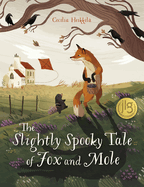
| Publisher: | Floris Books | |
| Genre: | Friendship, Holidays & Celebrations, Ghost Stories, Social Themes, Halloween, Juvenile Fiction | |
| ISBN: | 9781782509530 | |
| Pub Date: | August 2025 | |
| Price: | $19.99 |
| Starred | Children's & Young Adult |
by Cecilia Heikkila, trans. by Polly Lawson
Swedish author/illustrator Cecilia Heikkilä's The Slightly Spooky Tale of Fox and Mole is a lightly gothic tale that illustrates the dual perils of taking more than we give and not asking for what we need.
Fox and Mole are countryside neighbors by the sea, which is a popular summer destination for city folks. Then autumn arrives. The visitors leave and Mole comes round to Fox's every evening to sit "in Fox's best chair" and enjoy a cozy spread and a storybook, The Legend of the Scuffling Monster. It's the tale of a raccoon "transformed" into something monstrous after too many nights of solitude. Eventually, Mole eats all of Fox's provisions, leaving "only cabbages and an old jar of pickled herring" in Fox's pantry. When Mole forgets Fox's birthday, "something thorny [finds] its way to Fox's heart," and Fox, too, is transformed.
Heikkilä's digitally edited watercolor, gouache, and pastel illustrations track her narrative's theme of transformation perfectly, primarily through color. Bright reds, lovely sky blues, and pure emerald greens vanish from her spreads as Mole and Fox's friendship tips off balance, replaced by cooler-toned creams, browns, and olives.
With a title like The Slightly Spooky Tale of Fox and Mole, adults will want to know just how spooky this picture book really is. Children who have already met Little Red Riding Hood's lupine grandmother aren't likely to be more frightened by these scuffling monsters. Heikkilä's narrative seems informed by Aesop's fable of the ant and the grasshopper, but her moral takes a notably different direction: only by restoring the balance of mutual care in their friendship do Fox and Mole set each other to rights again. That's not spooky at all. --Stephanie Appell, freelance reviewer
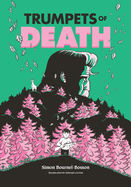
| Publisher: | Graphic Universe | |
| Genre: | Animals, Fantasy, Family, General, Young Adult Fiction, Comics & Graphic Novels, Multigenerational | |
| ISBN: | 9798765644324 | |
| Pub Date: | August 2025 | |
| Price: | $17.99 |
| Starred | Children's & Young Adult |
by Simon Bournel-Bosson, trans. by Edward Gauvin
Simon Bournel-Bosson's stunning graphic novel debut, Trumpets of Death, explores growing up, intergenerational conflict, and the clash between humans and the natural world through one child who is changed into a deer.
The last thing young Antoine wants is to be left with his grandparents in the middle of nowhere, but his father gives him no choice in the matter. Antoine is lonely there; his grandmother is kind but constantly complaining about her aches and pains, and his avid hunter grandfather is openly hostile toward him. When Antoine's grandmother sends him and his grandpa foraging for trumpets of death (mushrooms also known as the horn of plenty or black trumpet), the boy gets lost. He finds a mysterious type of mushroom, picks it, and is transformed into a white deer. The forest becomes his home: "For the first time, the forest is speaking to me. Comforting me." But such transformation is not without risk; in joining the natural world, Antoine the deer is seen by other humans as prey.
Bournel-Bosson's graphic novel, translated by Edward Gauvin, is a thought-provoking bildungsroman that features surreal images and color palettes expertly used to elicit emotion. The author changes palette to match moods, tones, and experiences, depicting happy outdoor Antoine in peppy greens, oranges, and yellows or gentle deer Antoine in comforting pink, white, and blue. Moments of fear, upset, discouragement, and conflict literally clash. Trumpets of Death has little internal narration and sparse dialogue, yet it is a powerful story about what it might mean to have enough space to grow up, or grow into oneself. --Michelle Anya Anjirbag, freelance reviewer
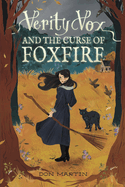
| Publisher: | Page Street YA | |
| Genre: | Fantasy, Wizards & Witches, Romance, Young Adult Fiction, LGBTQ+ | |
| ISBN: | 9798890032706 | |
| Pub Date: | August 2025 | |
| Price: | $18.99 |
| Starred | Children's & Young Adult |
by Don Martin
Kiki's Delivery Service meets Over the Garden Wall in this darkly whimsical YA fantasy debut about a young witch trying to free an Appalachian town from an evil magician's curse.
Foxfire, a small town "in the heart of a valley, at the base of a mountain" used to be accessible only "by an old swinging bridge." When the town fell on hard times, "a salesman wearing a slick, striped suit" and calling himself Earl took advantage of the townspeople's desperation. Earl offered shady deals--"Fair weather in exchange for your ability to see the color blue. A full head of hair for the lyrics to your favorite song."--until folks ran him out of town. Earl "escaped into the hills," where he grew more powerful and monstrous. He destroyed the bridge and trapped the residents of Foxfire, cursing the land. Years later, someone in Foxfire gets a message out: "We're cursed. Send help!" Traveling teen witch-in-training Verity Vox receives the note. She and her shape-shifting familiar, Jack, head off on broomstick to "break ourselves a curse." But Verity's powers are tested in Foxfire as she searches for the source of Earl's power.
Verity Vox and the Curse of Foxfire combines elements of fantasy, folk horror, and historical fiction with rich characterization, commentary on poverty and exploitation, and a subtle yet sweet queer romance. Author Don Martin's exceptional prose is by turns cozy ("the smell of sweet rolls wafting from a nearby oven") and sinister ("the voice sounded like bones, like acid breaking down a corpse.") This atmospheric and heartfelt story of community and coming-of-age is sure to bewitch readers. --Alanna Felton, freelance reviewer
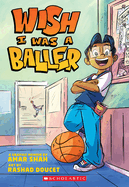
| Publisher: | Graphix/Scholastic | |
| Genre: | Biography & Autobiography, Biography & Memoir, Sports & Recreation, Juvenile Nonfiction, Comics & Graphic Novels | |
| ISBN: | 9781339042442 | |
| Pub Date: | August 2025 | |
| Price: | $14.99 |
| Children's & Young Adult |
by Amar Shah, illust. by Rashad Doucet
Emmy Award-winning sports producer, journalist, and author Amar Shah (Play the Game series) and Eisner Award-winning cartoonist Rashad Doucet (Art Club) bring their tremendous talents to Wish I Was a Baller, a remarkable graphic memoir about Shah's extraordinary early life as a teen sports journalist.
On May 10, 1995, the Chicago Bulls visit Amar's school, and the freshman is determined to get into the gym to see them. Amar is turned away at the door for not having a media pass, so he decides to skip a geometry test and go to the journalism room to acquire one. Amar succeeds and is "stunned.... An hour ago I was sweating a math test and now I had just interviewed the former world champs." Amar decides to reach out for more opportunities to attend games when he starts his journalism class. In his first year, Amar meets Shaquille O'Neal, who not only gives Amar an interview but also becomes a mentor. Unfortunately, it's not all hanging out with NBA superstars. Amar must juggle his new passion with being 15 years old--doing homework, attending family events, and facing bullying for his height, his basketball mediocrity, and for being Indian American.
Shah's graphic memoir is an excellent depiction of high school in the '90s and is filled with appreciation for the "golden era of the NBA." Doucet's illustrations are full of action and '90s flavor. The cartoonist uses diagonal lines and panels to build momentum and has characters and text break those lines to create movement. Extensive backmatter includes an author's note, pictures, and acknowledgements. Amar Shah's story is certain to delight any basketball fan. --Kharissa Kenner, library media specialist, Churchill School and Center

| Publisher: | Gecko Press | |
| Genre: | Emotions & Feelings, Animals, Death, Grief, Bereavement, General, Social Themes, Juvenile Fiction | |
| ISBN: | 9798765670521 | |
| Pub Date: | August 2025 | |
| Price: | $18.99 |
| Children's & Young Adult |
by Olivier Tallec, trans. by Antony Shugaar
French author/illustrator Olivier Tallec compassionately introduces the challenging concept of death to young readers in Is It Asleep?, thoughtfully translated by Antony Shugaar. Tallec's third book starring an unnamed squirrel, after It's MY Tree and A Better Best Friend, opens with two bffs "sit[ting] on the old stump and watch[ing] the birds flash by." Squirrel and mushroom buddy Pock head to the yellow meadow, seeking "the bird we like best," only to discover the blackbird "lying there completely still." No amount of patient waiting, then increased noisemaking, elicits a response. Fetching their mouse friend Gunther doesn't help, except to thoroughly upset the rodent when Pock suggests the blackbird may be dead: "Gunther says no, because anything that sings so well and has such beautiful feathers can't die." But, alas, the blackbird can't be revived. "Even if it is dead, it still needs protection"; together, the trio build a cairn of "yellow, red, and orange leaves" and honor their musical companion.
Using a warm palette of oranges, reds, and browns, Tallec poignantly sets his narrative amid an autumnal woodland, a time when leaves are falling, readying for the oncoming solemnity of winter. "They're dead too," Squirrel comments about the still-colorful leaves, "but we choose the prettiest ones." Tallec's whimsical art deftly captures the deep concern and shock of the survivors--particularly through their expressive eyes--in trying to understand the finality of death. He manages to add comforting humor--tiny Gunther shouldering the weight of Pock and squirrel--as if a reminder that laughter and sadness can co-exist. Inevitable reality finds a soft, welcoming cushion here. --Terry Hong